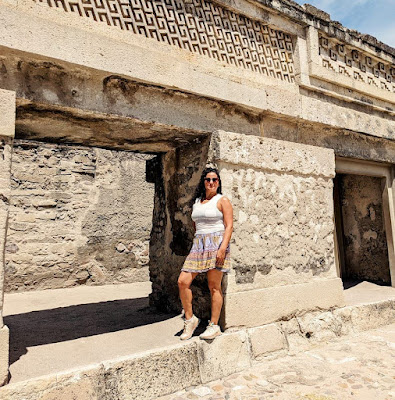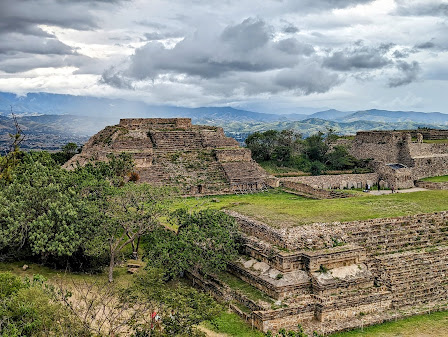Dia de Muertos in Oaxaca Part 1: The Build Up to Dia de Muertos
“Those elements that speak of affection toward the deceased are, in fact, graphic and eloquent expressions of love towards life. During this celebration, death is transformed into a friend and companion with whom to share good times.” - Journalist Mary J Andrade and cultural advisor for the film Coco
October is Dia de Muertos season in Oaxaca. In the weeks leading up to the most important holiday of the year, Oaxacenos are busy making Day of the Dead plans. Faces light up when talk of the holiday arises. Bright orange marigolds pop up on tabletops, around fountains, and in clay pots shaped like skulls. These golden blooms resemble the light of the sun, the light of life. Not only are they symbols of immortality, but their bright petals are said to guide souls home.
The markets bustle with activity. Many are out shopping for candles, raw copal resin to burn as an offering, sugar skulls, and foods like chiles and chocolates, two staple ingredients for the mole families will prepare for the dead. The signature dish will be placed on the ofrenda (or altar), along with other treats that the departed left behind, like Coca-Cola, Tecate beer, or lush tropical fruits. When the souls come back to reunite with their loved ones, they will want to partake in all of the earthly delights they left behind.
While Dia de Muertos is a fusion of prehispanic and Christian traditions (it was first celebrated as a harvest festival in September, but then was absorbed into the Catholic “All Soul’s Day”), its roots are clearly indigenous.
Like many earth-based spiritual and indigenous traditions worldwide, the ritual of Dia de Muertos holds that death is only the beginning of a new chapter, that we can have a direct connection to our ancestors that goes beyond simple remembrance, and that when we commune with those who have passed — and with death itself — everyone benefits, from the deceased to our living family to ourselves.
The rituals and celebrations of Dia de Muertos are an exchange of love between the living and the dead. What is remembered, lives, and tradition gives families ways to bond and make memories with their living family and friends.
Last weekend was the official start of the celebrations. Colorful altars adorned with flowers, tropical leaves, and wooden masks, piled high with offerings of purple grapes, candy, and beer, strewn with Pan de Muertos (bread of the dead), popped up across the Zocolo. As night fell, the altar tenders lit candles and copal incense, while people from around the world gathered to take pictures.
Next to each altar was a table displaying Pan de Muertos, a traditional sweet bread baked with colorful faces peeking out, representing souls. Some breads have a circular shape to symbolize the cycles of life and death. Covered with shimmering sugar, they have incisions on all four corners representing the four directions of the universe.
I didn’t have to plan to see parades. All I had to do was walk around, and I’d stumble upon people painted like skeletons or wearing huge foam masks to transform into underworld creatures reveling, jumping, and dancing to a brass band’s relentless music. Fireworks went off intermittently. I posed for a picture with a feisty grim reaper. Under a full moon, little kids lay on the ground pretending to be dead, with Halloween candy buckets next to them, ready for treats (a clear fusion of traditions).
Alongside altars, sand paintings of glittering mounds of bones and skulls, and shimmering blue oceanscapes covered in seashells, and joyful dead dogs, brought beauty to the city. They originate from prehispanic customs, when loved ones of passed-on souls crafted pictures of the portal between life and death in the sand to guide their deceased loved ones to the next life. Now they’re an art form crafted by creatives across the city.
Skulls and skeletons were everywhere — climbing up ladders onto roofs, hanging off of balconies, greeting diners at restaurants. Dia de Muertos is a time when death walks hand in hand with life, when polarities of joy and sadness merge, forces of life and death merge, the two worlds merge into a space beyond time.




























Comments
Post a Comment